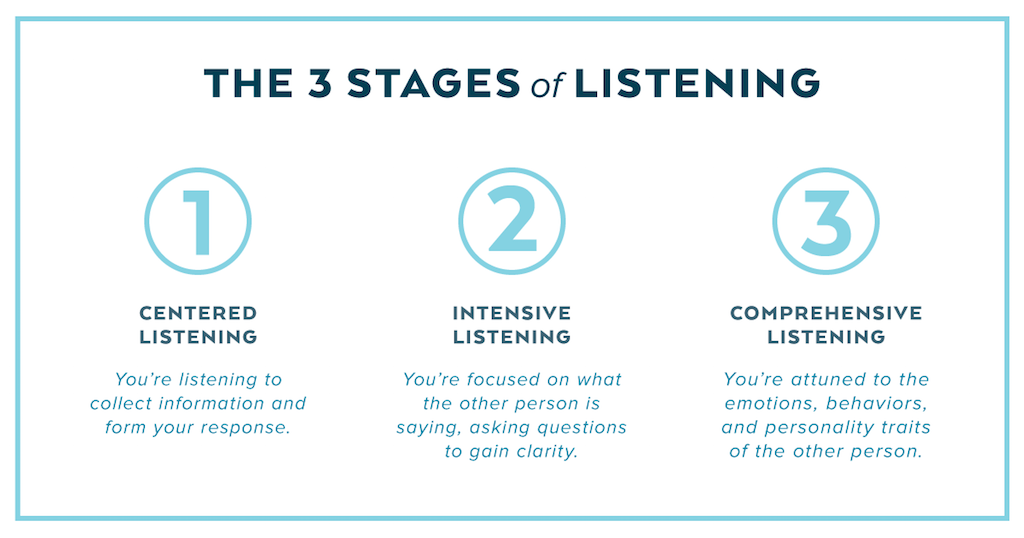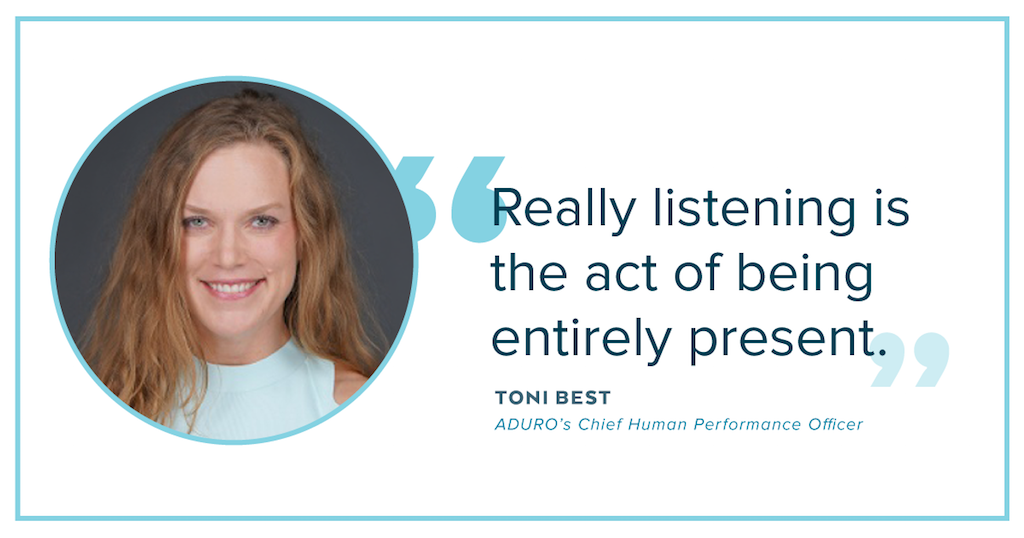You’re sitting in a group meeting, listening to one of your co-workers share an idea. Something she says sparks an idea of your own. You start to plan out how it would work, what resources you’d need to make it happen, and how you’ll pitch it to the group. Returning to the present moment, you look for an opportunity to jump in and share it. But, instead, your co-worker asks you what you think about her idea. Unfortunately, you don’t have any feedback because you’re not sure what she said in the first place.
Chances are, at some point, we’ve all been on one or both sides of this situation. The solution? Listening to understand instead of listening to respond, known as active listening.
Read on to find out why active listening is such a valuable skill — and how you can master it.
What is Active Listening?
Active listening involves hearing the words being spoken and understanding the meaning behind them. The best way to determine that? Start by asking yourself, “What underlying need or emotion is the speaker trying to convey?” The answer to that question can help us to better understand the other side, establish trust, and increase the likelihood that the other person will listen to us, too. “Listening is the missing half of communication,” negotiation expert William Ury said during his TEDx Talk on “The Power of Listening.” “Absolutely necessary, but often overlooked.”
Stages of Listening
There are three stages of listening, each of which serves a unique purpose in the workplace.
Those stages are:
- Centered Listening (Level 1) – You’re listening to collect information and are actively forming your response. This type of listening can be useful when a co-worker asks you to help them resolve a problem quickly.
- Intensive Listening (Level 2) – You’re intently focused on what the other person is saying and asking questions to better understand their thinking. This type of listening is helpful when you want to understand someone else’s point-of-view without interjecting your own, such as during a client meeting.
- Comprehensive Listening (Level 3) – You’re attuned to the emotions, behaviors, and personality traits of the person with whom you’re interacting. This type of listening is important when you need to read a room and adjust accordingly, such as during a presentation.
Both Level 2 and 3 are considered “active listening.” They foster collective purpose between the speaker and the listener, allowing for more collaborative and forward-moving conversations.

What Prevents Us From Listening?
In truth, most of us want to become better listeners. So what’s stopping us? Turns out, most of the time, we’re actually standing in our own way. “Our egos are really attached to our opinion,” says Toni Best, ADURO’s Chief Human Performance Officer. She recommends listening as if you have no opinion and then asking clarifying questions. When you’re not affected by your own opinion, she explains, you’re able to empathize with the other person’s feelings.
A person’s habits — including diet, exercise, and sleep — can also affect his or her listening capabilities. “Really listening is the act of being entirely present,” Best says. “If I don’t get enough sleep, I miss what the other person said. Sleep is the most important thing.”

Put It Into Practice
Becoming a great listener takes time, practice, and humility. It starts by recognizing that we don’t have all of the answers. That’s why Best suggests finding an accountability partner, who can help refine listening skills. Ask your partner to tell you a story, idea, or problem. Then repeat back the underlying message you took away from it. Were you able to capture what he or she was saying, as well as the sentiment behind it?
It can sometimes be difficult to listen without judgment, especially during a conflict. As a result, we often form our own interpretation of the truth, which becomes the story we tell ourselves. After experiencing a stressful situation, take a step back and complete Reality-Based Leadership’s “New Story Exercise.” It can help you learn to separate your emotions from the facts, and approach future challenges from a more neutral perspective.
That awareness helps us see situations as they really are, moving forward with an open mind — and open ears.
